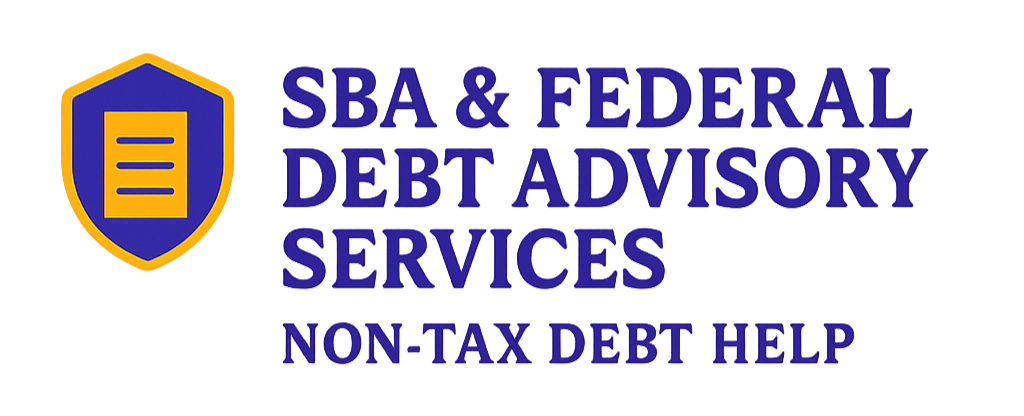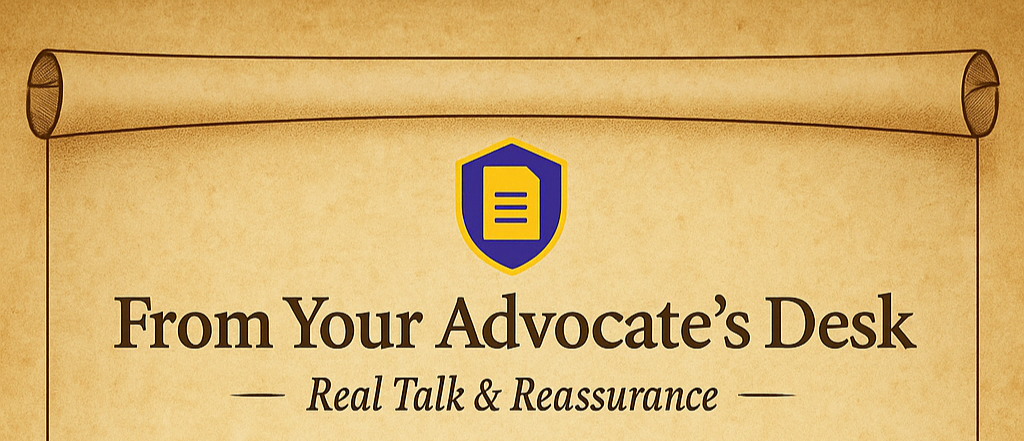
You are not out of options. Use this calm plan to mark deadlines, ask for proof of debt, check the math, decide on a hearing, and choose your next step. Acting early protects your paycheck and keeps doors open, even if your loan has been at Fiscal Service for years.
________________________________________
Finding out your SBA loan is now with the Bureau of the Fiscal Service can feel heavy. It does not mean you failed. It means you need a clear plan and a little support. You can do this one step at a time.
1) Open the letter and mark the date
Take the most recent demand or notice letter and write the deadline on a calendar you see every day. If it is a Notice of Intent to Initiate Wage Garnishment, a timely hearing request may keep wage withholding from starting while a decision is made. Late requests may not pause the garnishment immediately.
2) Ask for proof of the debt
If you received a demand letter, you can request documents that show the debt exists and the current balance. The Bureau of the Fiscal Service will send the documents that substantiate the debt. We can prepare an FS Form 13 (Authorization for Release of Information) so the agency can send records to your advocate and authorize us to correspond with Fiscal Service on your behalf.
3) Check the math
Ask for a transaction history that shows every payment and how it was applied to principal, interest, and fees. Reconcile that history to the amount that the Bureau of the Fiscal Service claims that you owe. If something does not add up, put your dispute in writing.
4) Decide whether to request a hearing
If you received a Notice of Intent to Initiate Wage Garnishment Proceedings, then you can request a hearing to address the existence or amount of the debt. You can also claim hardship if garnishment would prevent you from affording your basic living expenses. Submit proof of income such as your pay stubs. Additionally, provide statements for rent or mortgage, utilities, medical costs, child care, and similar necessary expenses. A financial hardship hearing and decision will not stop offsets; they can continue using a separate collection tool.
5) Consider a payment arrangement
If an affordable written plan is approved during the notice period, it can prevent Administrative Wage Garnishment from starting. If your employer already received an order, the order usually stays in place unless there is specific approval to reduce or release it. Offsets will continue while a payment plan is in place. It is important to note that repayment terms are set by the creditor agency (the agency that referred your debt to Treasury for collection) and may not match your budget.
6) Why Statutes Of Limitations Don’t Apply To Federal Administrative Collections
Administrative tools do not depend on a lawsuit and do not expire just because time passes.
• Administrative Wage Garnishment can be up to 15% of disposable pay. If another garnishment already exists, total withholding from wages cannot exceed 25% of disposable earnings.
• The Treasury Offset Program can reduce certain federal payments such as tax refunds and Social Security retirement, survivors, or disability benefits. Social Security offsets are limited to 15 percent and only the portion above $750.00 per month can be offset.
7) Job status matters
If you were involuntarily separated from your job, Administrative Wage Garnishment may not be issued until you have been continuously re-employed for 12 months. Employers may not fire you because of one wage garnishment.
8) When a compromise might help
If you cannot repay in full, a compromise offer may be an option to consider. Approval is not guaranteed. It requires complete financial disclosure and documents that show how the offer would be funded.
What to expect after you act
You will receive replies by mail or email. Keep copies, respond by the dates given, and keep everything in one folder. If you move, update your address with the agency in writing. You can also call the Bureau of the Fiscal Service and provide them your new address.
Straight talk
Waiting rarely helps. Offsets and garnishment can continue while you hope the problem fades. Taking one small step today protects your options tomorrow.
How we can support you:
Requesting Proof of debt, organize disputes, prepare wage-garnishment hearing requests, and assemble complete packages for payment arrangements or compromise reviews. If you want help, schedule a free 15-minute consultation at NonTaxDebtHelp.com.
Authority note: Federal administrative collection is authorized by 31 U.S.C. § 3716 (offset), 31 C.F.R. § 285.11 (AWG), and 31 C.F.R. § 285.4 (Social Security offset limits).
Disclaimer: This resource is for informational purposes only and is not legal advice. SBA & Federal Debt Advisory Services is not a law firm and does not provide legal representation. We support individuals navigating federal debt processes as advocates and consultants. If your situation requires legal advice, you may wish to consult an attorney. This resource was created by SBA & Federal Debt Advisory Services. Learn more at NonTaxDebtHelp.com or schedule your free 15-minute consultation at: SBA & Federal Debt Advisory Services


 DisclaimerDisclaimer
DisclaimerDisclaimerLooking for more support and straight answers?
Check out these helpful posts:
Can the U.S. Bureau of the Fiscal Service Really Garnish My Wages?
From Your Advocate’s Desk – Real Talk & Reassurance

You are not out of options. Use this calm plan to mark deadlines, ask for proof of debt, check the math, decide on a hearing, and choose your next step. Acting early protects your paycheck and keeps doors open, even if your loan has been at Fiscal Service for years.
________________________________________
Finding out your SBA loan is now with the Bureau of the Fiscal Service can feel heavy. It does not mean you failed. It means you need a clear plan and a little support. You can do this one step at a time.
1) Open the letter and mark the date
Take the most recent demand or notice letter and write the deadline on a calendar you see every day. If it is a Notice of Intent to Initiate Wage Garnishment, a timely hearing request may keep wage withholding from starting while a decision is made. Late requests may not pause the garnishment immediately.
2) Ask for proof of the debt
If you received a demand letter, you can request documents that show the debt exists and the current balance. The Bureau of the Fiscal Service will send the documents that substantiate the debt. We can prepare an FS Form 13 (Authorization for Release of Information) so the agency can send records to your advocate and authorize us to correspond with Fiscal Service on your behalf.
3) Check the math
Ask for a transaction history that shows every payment and how it was applied to principal, interest, and fees. Reconcile that history to the amount that the Bureau of the Fiscal Service claims that you owe. If something does not add up, put your dispute in writing.
4) Decide whether to request a hearing
If you received a Notice of Intent to Initiate Wage Garnishment Proceedings, then you can request a hearing to address the existence or amount of the debt. You can also claim hardship if garnishment would prevent you from affording your basic living expenses. Submit proof of income such as your pay stubs. Additionally, provide statements for rent or mortgage, utilities, medical costs, child care, and similar necessary expenses. A financial hardship hearing and decision will not stop offsets; they can continue using a separate collection tool.
5) Consider a payment arrangement
If an affordable written plan is approved during the notice period, it can prevent Administrative Wage Garnishment from starting. If your employer already received an order, the order usually stays in place unless there is specific approval to reduce or release it. Offsets will continue while a payment plan is in place. It is important to note that repayment terms are set by the creditor agency (the agency that referred your debt to Treasury for collection) and may not match your budget.
6) Why Statutes Of Limitations Don’t Apply To Federal Administrative Collections
Administrative tools do not depend on a lawsuit and do not expire just because time passes.
• Administrative Wage Garnishment can be up to 15% of disposable pay. If another garnishment already exists, total withholding from wages cannot exceed 25% of disposable earnings.
• The Treasury Offset Program can reduce certain federal payments such as tax refunds and Social Security retirement, survivors, or disability benefits. Social Security offsets are limited to 15 percent and only the portion above $750.00 per month can be offset.
7) Job status matters
If you were involuntarily separated from your job, Administrative Wage Garnishment may not be issued until you have been continuously re-employed for 12 months. Employers may not fire you because of one wage garnishment.
8) When a compromise might help
If you cannot repay in full, a compromise offer may be an option to consider. Approval is not guaranteed. It requires complete financial disclosure and documents that show how the offer would be funded.
What to expect after you act
You will receive replies by mail or email. Keep copies, respond by the dates given, and keep everything in one folder. If you move, update your address with the agency in writing. You can also call the Bureau of the Fiscal Service and provide them your new address.
Straight talk
Waiting rarely helps. Offsets and garnishment can continue while you hope the problem fades. Taking one small step today protects your options tomorrow.
How we can support you:
Requesting Proof of debt, organize disputes, prepare wage-garnishment hearing requests, and assemble complete packages for payment arrangements or compromise reviews. If you want help, schedule a free 15-minute consultation at NonTaxDebtHelp.com.
Authority note: Federal administrative collection is authorized by 31 U.S.C. § 3716 (offset), 31 C.F.R. § 285.11 (AWG), and 31 C.F.R. § 285.4 (Social Security offset limits).
Disclaimer: This resource is for informational purposes only and is not legal advice. SBA & Federal Debt Advisory Services is not a law firm and does not provide legal representation. We support individuals navigating federal debt processes as advocates and consultants. If your situation requires legal advice, you may wish to consult an attorney. This resource was created by SBA & Federal Debt Advisory Services.
